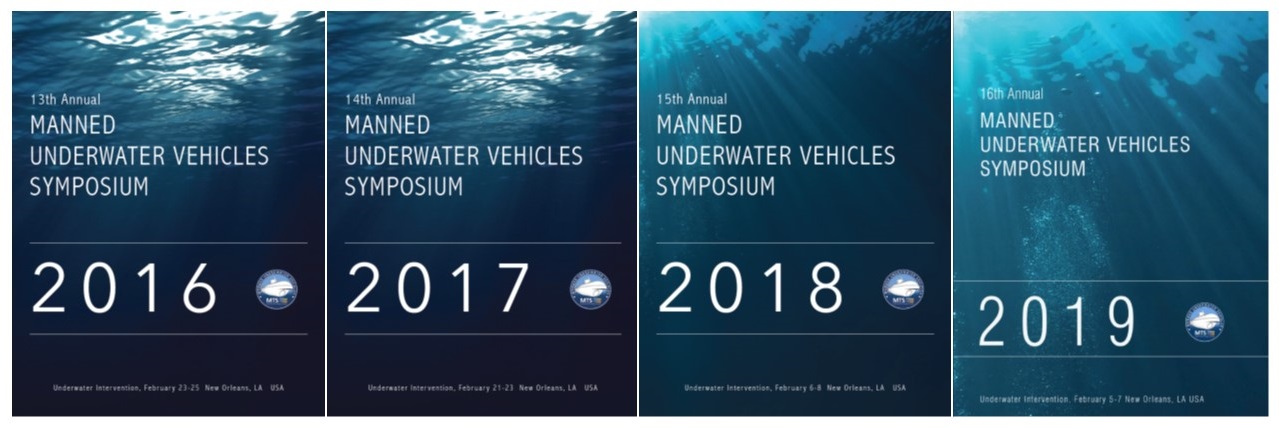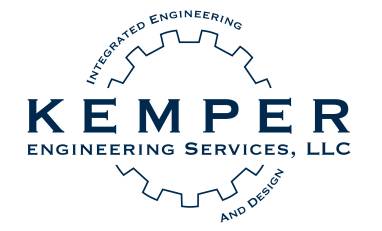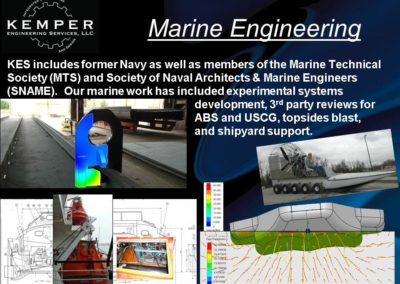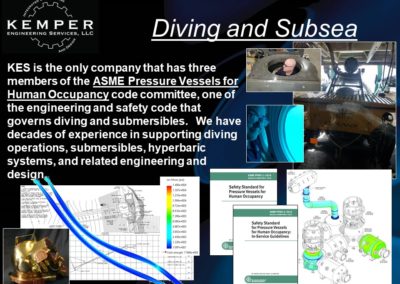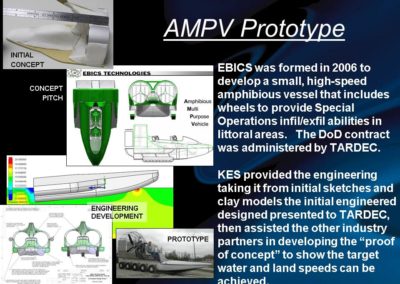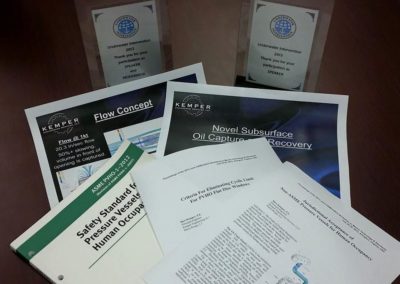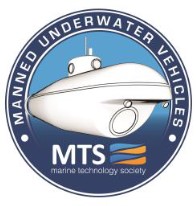Kemper Engineering Services’ team includes in-depth marine and subsea engineering, design, and operations experience. Our team’s operational experience includes former Navy sailors, former air-system and saturation diver, and a marine equipment fleet manager. Our engineering background includes three members of the ASME Pressure Vessel for Human Occupancy codes and standards committee, which governs hyperbaric systems, diving systems, and many submersibles as well as members of the Marine Technical Society (including the Submarine group) and the Society of Naval Architects & Marine Engineers. We have presented at Underwater Intervention multiple times as well as the Joint ASME-USCG Technologies Conference. We work in the Gulf South with local shipyards and diving companies to anywhere in the world, such as the EAGLE DSV, the same diving support vessel that dove and did initial entry on the Soviet nuclear submarine KURSK, which tragically failed to surface during an exercise. We have used USCG, ABS, DNV, GL, and BS standards in reviewing hull frames, deck loading, and marine loading for clients.
In addition to his work regarding marine hulls, pressure vessel systems, flow dynamics, subsurface oil capture, and blast effects, Bart Kemper has been recognized as one of the international engineering leaders regarding glassy polymer viewports. His work involving multi-physics simulation, testing, and failure modes regarding viewports has been used throughout the world. He is the current chair for ASME Pressure Vessels for Human Occupancy subcommittee on Viewports and has been appointed head of an ASME task force to develop “Design By Analysis” rules for glassy polymers in pressure vessels and other potential applications. This will allow new transparent materials and shapes to be used for crewed and uncrewed systems and still be within an engineering code. Bart was also identified as an expert regarding the Titan Submersible tragedy, providing media commentary to differentiate the Titan from actual tourist submarines and discussing codes, standards, and classification societies.
KES is part of the OCEAN DECADE U.S. Nexus in support of the international “OCEAN DECADE” drive for innovation in science, engineering, technology, and participation in our oceans. We are excited about assisting the partner companies and groups in this 10 year focus on the oceans.
KES’ marine and subsurface work includes:
- Design or design reviews for supports and ship systems for DNV, ABS, DIN, GL, USCG, and BS engineering codes
- Engineering plans and designs for diving operations
- Lift and launch systems for lifeboats
- Hull design and analysis, to include flow modeling and stress analysis
- Submarine evaluations
- Conceptual submarine design (for the US National Academies’ OCEAN SHOT program)
- PVHO window evaluations
- Evaluation of marine systems, such as keel coolers and pipelay systems
- Topsides blast modeling for ships and barges
- Fitness-for-service review of pressure vessels and structures
- PVHO design, including acrylic windows
- Proof of concept for amphibious vehicle for DoD
- Forensic investigation of diving incidents
- Research in new acrylic design techniques
- Design review of non-ASME diving systems for equivalence for USCG approval
- Oil booming and subsurface oil capture system development

Key Clients
- Acergy (Aberdeen, Scotland)
- Aqua-Air Industries (Harvey, LA)
- AquaVenture Watercraft (Manchester, NH)
- Blanson Acrylic Engineering (Brighton, England)
- Caldive International (Houston, TX)
- Divers Supply, Inc. (Gretna, LA)
- DOF Subsea Group (Bergen, Norway)
- EBICS Technologies (Kiln, MS)
- Global Industries (New Orleans, LA)
- Helix Energy Solutions Group (Houston, TX)
- IMRAD (Lafayette, LA)
- IUC Group (Houston, TX)
- KnightHawk Engineering (Houston, TX)
- Oil Containment Systems, Inc. (Toronto, Canada)
- SeaTech Industries (Belle Chase, LA)
- Specialty Diving (Covington, LA)
- Stolt Offshore (Houston, TX)
- Trinity Marine Products (Brusly, LA)
- Woods Hole Oceanographic Institution (Woods Hole, MA)
